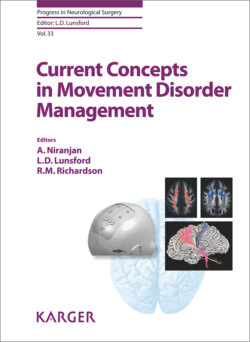Читать книгу Current Concepts in Movement Disorder Management - Группа авторов - Страница 18
The Deep Brain Stimulation Era
ОглавлениеHosobuchi in California and Richardson in New Orleans were strong advocates for the role of deep brain stimulation (DBS) for chronic nociceptive or central pain that was refractory to medical management. Based on concepts such as the gate theory of pain inhibition, and initial work with spinal cord stimulators for chronic pain, investigators in France, Canada, and the US also pursued the application of high frequency stimulation of deep brain nuclei for the suppression of abnormal movements of Parkinson’s disease and essential tremor. Significant credit goes to Benabid who performed DBS for a large group of patients with movement disorders and trained a generation of neurosurgeons in the use of DBS [21]. This experience has stimulated many centers to apply DBS for an increasing number of functional disorders, such as obsessive compulsive disorder and depression. Lozano in Toronto [22] and Rezai [23] in Cleveland were other pioneers in the world of DBS. Most centers subscribed heavily to the concept that extensive brain microelectrode recordings were needed in each patient to optimize the target selection. The use of multipolar electrodes facilitated a broader volume of brain stimulation, which could be defined in subsequent testing after the electrode was inserted.
